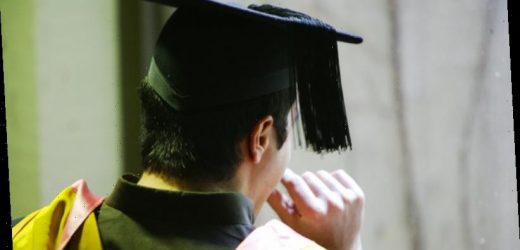Australian universities will have to decide whether they want to compete in the crowded field of online education as the federal government urges them to find ways to tap new markets of international students.
In a speech this week calling for a rethink of Australia’s international education strategy, federal Education Minister Alan Tudge nominated Indonesia and India as key markets that had booming demand for tertiary studies but lacked the in-country capacity to train them.
Universities will have to decide whether they want to compete in the crowded field of online education as part of a federal government review of Australia’s international education strategy.Credit:Fairfax Media
Indonesia has set a target of an extra 57 million skilled workers by 2030 and India has a goal of training more than 400 million people by 2022.
Dr Eugene Sebastian, director of The Australia-Indonesia Centre at Monash University, said Australian providers had a big role to play in meeting demand in Indonesia.
“There will be a segment of the Indonesian market that can’t afford to study overseas but will look for affordable alternatives,” Dr Sebastian said.
“There are a growing number of local and foreign EdTech companies in Indonesia. It points to not only Indonesia’s potential as a market but also the potential for Australian providers to partner with emerging Indonesian EdTech firms to add an online component to their offering.”
Dr Sebastian said Indonesia’s internet user base was 150 million people, making it the largest and fastest-growing digital economy in south-east Asia, but slow connectivity speeds remained a significant barrier to access for many Indonesian students.
He said universities would be more competitive in the online learning space by offering a hybrid model, where students completed some of their study in Australia.
“Students want more foreign institutional engagement. They want more face-time interaction with lecturers. Many want more work-ready skills through connecting to industry, internships or short-term study abroad experience,” Dr Sebastian said.
Mr Tudge launched a consultation paper this week on a new 10-year strategy for the $30 billion-plus sector aimed at driving its recovery from the COVID-19 crisis.
‘… the attraction for many students is that they can come to Australia and study, not that they will continue to study in their home countries.’
He said in-country education would remain the core offering from Australia’s institutions, but the sector should take advantage of the boom in online learning to tap into new markets of students who could not afford to study full-time in Australia.
“We have the opportunity for Australian institutions to meet this market with greater use of online delivery or hybrid learning models at different price offerings. This could be in both full course and micro-credentials,” Mr Tudge said.
He said universities in other countries were already moving into this space, while education companies and start-ups added another layer of competition.
Universities Australia, which represents the country’s 39 universities, supported this call, saying hybrid models presented both Australian and international students with new opportunities and would give the sector a competitive edge. It has estimated about 17,300 jobs were shed from Australian campuses in 2020, with the loss of international student fee revenue the major cause of budget pressures.
Group of Eight chief executive Vicki Thomson said the pandemic had given universities a “proof of concept” that online course delivery was possible but questioned whether this model would play a significant role in the sector’s long-term recovery.
“We are delivering largely online to our international students now. We’ve got 30,000 students studying offshore. We do want to diversify our market but the attraction for many students is that they can come to Australia and study, not that they will continue to study in their home countries,” Ms Thomson said.
Chinese and Indian students account for 55 per cent of all international student enrolments across Australia’s education system.
Most Viewed in Politics
From our partners
Source: Read Full Article



